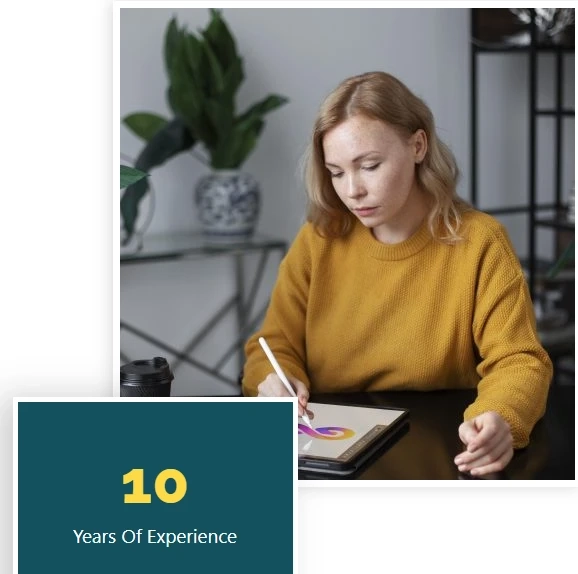An effective corporate brochure is a crucial marketing tool that may help you present your products, services, and business identity in an eye-catching and educational manner. A well-designed brochure can make a solid first impression on potential clients, partners, and investors, making it an invaluable asset for any company. Let us look at the engaging content of company brochure design that engages readers and generates sales.
Step 1: Specify your goals:
Determining your brochure's goals is essential before beginning the design process. What do you hope this brochure will accomplish? Is it to advertise a specific product, summarize your services, or expose your business to a new market? Knowing your objectives will direct the entire design process and guarantee that your brochure delivers the desired message to your target market.
Step 2: Determine Your Target Market:
For your brochure to appeal to your target audience, you must first understand them. Think about the characteristics, passions, and problems of your ideal clients. Ensure your brochure communicates directly with them by adjusting the design and content to reflect their requirements and preferences.
Step 3: Plan the Content:
Plan the content for your brochure while keeping your goals and the intended demographic in mind. Separate the material into different parts, such as a captivating cover page, a company description, a product or service, client testimonials, and a call to action. Priorities the most crucial details and use engaging, clear, concise, and short language.
Step 4: Select the Proper Type of Brochure:
Bi-fold, tri-fold, gate-fold, and other brochures are available for selection. Choose a format based on the information you provide and design goals. Tri-folds provide more incredible room for information, whilst bi-folds are best for simple statements. Gatefolds are excellent for product launches since they are ideal for revealing a surprise element.
Step 5: Consider brand identity when designing:
The extension of your brand identity should be reflected in your company brochure. Utilize the fonts, graphics, and colors associated with your brand consistently across the design. To give your consumers a consistent brand experience, ensure the brochure accurately represents the personality and values of your company.
Step 6: Create a Captivating Cover:
Your brochure's cover creates the initial impression; therefore, it must be captivating. Use an engaging title, a visually arresting image or illustration, and your company's emblem. Readers' curiosity should be piqued, and their want to learn more sparked by the cover.
Step 7: Develop Captivating Visuals:
To properly engage your audience and transmit information, visual components are essential. Use graphics and photos of the highest quality to supplement your content and reflect your brand. Data and statistics can be presented in a more palatable way with the aid of infographics and charts.
Step 8: Carefully Arrange the Content:
Make sure the brochure has a sensible flow of information. Make material easier to read using headings, subheadings, and bullet points. Keep paragraphs short and use whitespace wisely to achieve a tidy and uncluttered design.
Step 9: Add Calls-to-Action (CTA) buttons:
You can encourage your readers to take appropriate steps by including concise, concise calls to action. Ensure that your CTAs are significant and noticeable, whether they are asking people to visit your website, get in touch with your sales team, or sign up for your newsletter.
Step 10: Review and proofread:
Review and proofread your company brochure design content and design in detail before sending it for printing or releasing it digitally. Verify the pieces are all properly aligned, check for spelling and grammar mistakes, and the image resolution. To give a good impression, a brochure must seem professional.
Step 11: Distribution and Printing:
When printing physical brochures, use a renowned printer that can produce products of the highest caliber. Choose the paper type and finish that best represents your brand. Ensure the brochure is optimized for all platforms and devices before distributing it digitally.
Step 12: Measure and analyses:
Once your company's brochure has been distributed, monitor its effectiveness and evaluate the results. Track KPIs related to the brochure, such as website traffic, generated leads, or sales. You can use this information to evaluate your brochure's efficacy and adjust for upcoming marketing campaigns.
Conclusion:
Finally, producing a business brochure involves thorough planning, deliberate content organization, and imaginative execution. This step-by-step manual will help you make a stunning and captivating company brochure design that persuasively conveys your brand's message and motivates your target market to take the necessary actions. To guarantee that your company brochure becomes fascinating in the market, keep in mind to create it in a way that is consistent with your brand identity, adapt to the demands of your audience, and continually assess its effectiveness.


